IN THIS POST
Known and loved by all Pakistanis and admired by even his enemies, the Founder of the Nation, Quaid-e-Azam Muhammad Ali Jinnah was born on the 25th of December in 1876 in Karachi. Earning the titles of Quaid-e-Azam (Greatest Leader) and Baba-e-Qaum (Father of the Nation) due to his tireless efforts that led to the creation of Pakistan on the 14th of August 1947, Muhammad Ali Jinnah lived in several different cities and several different properties at various points in his lifetime. We’ve compiled this information to give you a comprehensive overview of Quaid-e-Azam’s homes in Pakistan, including two of the most famous—Quaid-e-Azam House in Karachi and Quaid-e-Azam Residency in Ziarat.
Here’s our salute to the greatest leader the subcontinent has ever seen!
Quaid-e-Azam’s Homes in Pakistan
Each of these properties was once home to the Father of the Nation.
Wazir Mansion, Kharadar, Karachi
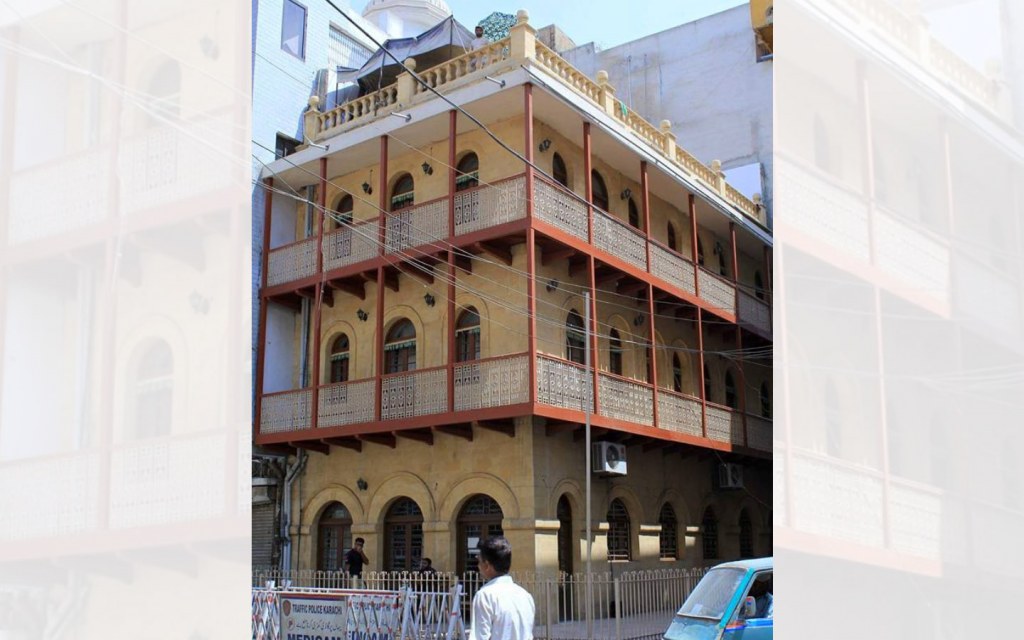
Born on the 25th of December in 1876, the first place that Quaid-e-Azam called home was Wazir Mansion, which is now officially titled as ‘Quaid-e-Azam Birthplace Museum’. Located in busy, bustling Kharadar, the mansion was built with stone and mortar from 1860-1870. Jinnah spent 16 of his early years in this property that his parents had rented just two years before his birth until he went to England to study law. His parents returned to Gujrat in India a few years after his departure, but the Department of Archaeology and Museums, as well as the Government of Pakistan, preserved the building and its artefacts shortly after the partition of the Indian subcontinent.
Located beside Akhund Masjid, Wazir Mansion is most notable for its lime-coloured façade that has been preserved to date. While there used to be a fountain at the entrance in earlier times, it was removed in later renovations as more focus was diverted to preserving the structure itself.
Today, the Quaid-e-Azam Birthplace Museum is home to a reading room on the ground floor with a huge library featuring books on notable subjects, including many concerning Jinnah himself. Meanwhile, the first floor can be entered via a set of wooden stairs that open up to an entirely air-conditioned space where Jinnah’s books, furniture, bed set, couches, and other belongings have been preserved.
The museum can be entered via the main gate with a booking office and a bookshop located nearby. It is open to the public, six days a week (except Wednesdays), from 9 am to 5 pm. Entrance is free for all.
Quaid-e-Azam House, Fatima Jinnah Road, Karachi
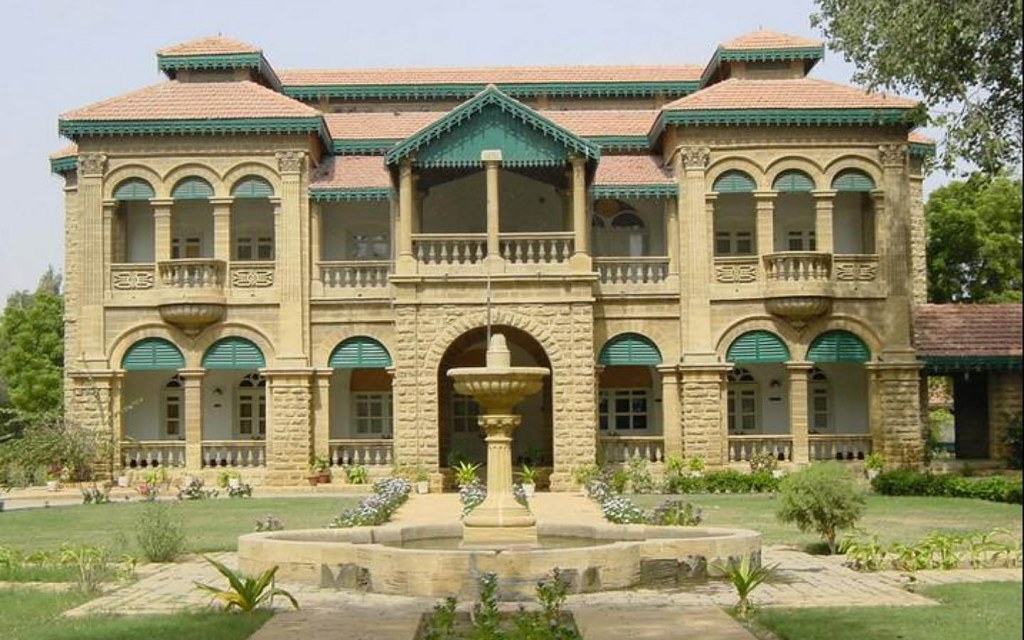
Next on our list of Quaid-e-Azam’s homes in Pakistan, we have the Quaid-e-Azam House Museum, which was bought by Jinnah in 1943 as his family’s residence. Located in the heart of the city, near Saddar and Karachi Cantonment on Fatima Jinnah Road, this house is more popularly known as the Flagstaff House & Museum after an official move was made to modify its name. While Quaid-e-Azam spent his last years in the Governor’s House (discussed below) and did not get a chance to live here as much as he would have liked, he visited the house often. His sister Mohtarma Fatima Jinnah spent the most time in this residence, up until 1964, even after Jinnah’s passing in 1948.
The building was then acquired by the Government of Pakistan in 1985, and conservation efforts were made to convert it into a museum. The Flagstaff House is spread over approximately 10,000 square yards, with two floors containing three rooms each. The grounds of the Quaid-e-Azam House Museum are also home to 18 outhouses, 3 guardrooms, 4 garages, and a kitchen, which is now an administrative office. Limestone masonry, reflective of Wazir Mansion, supports the roof with red ceramic tiles protecting it from the harsh summer sun of Karachi.
Inside, the Quaid-e-Azam House Museum contains historical memorabilia of a bygone era, used by the Father of the Nation himself. Furniture, ancient lamps, crockery, and clothes used by the leader are creatively preserved and displayed everywhere. The study is the room that is most elaborately furnished using a reading table and chairs, along with table lamps and essential stationery. Wooden shelves stand tall here, filled with the crockery used by Jinnah and his sisters. The need for preservation has resulted in a centrally air-conditioned space that contains a fire-extinguishing system, a burglar alarm, as well as CCTV surveillance capabilities.
While the main house has retained its exterior charm, the annexe has been refurbished, with interior walls being broken down to create a larger hall and the roof being modified to prevent the structure from collapsing. Most of the outhouses have also been converted into storage areas and offices, but one of them was converted into a library in 2003 for the convenience of students and scholars. The gardens have also been redesigned with repairs and restoration work being done to return them to their former beauty and you can even see the vintage cars of Jinnah and his sister on display in the garage.
The Flagstaff House & Museum is open for visits daily from 9 am to 4 pm (except Wednesdays). You will be given a free guided tour upon entry, and there is no entry ticket for exploring the museum. Photography is prohibited inside the museum.
Governor’s House, Aiwan-e-Sadar Road, Karachi
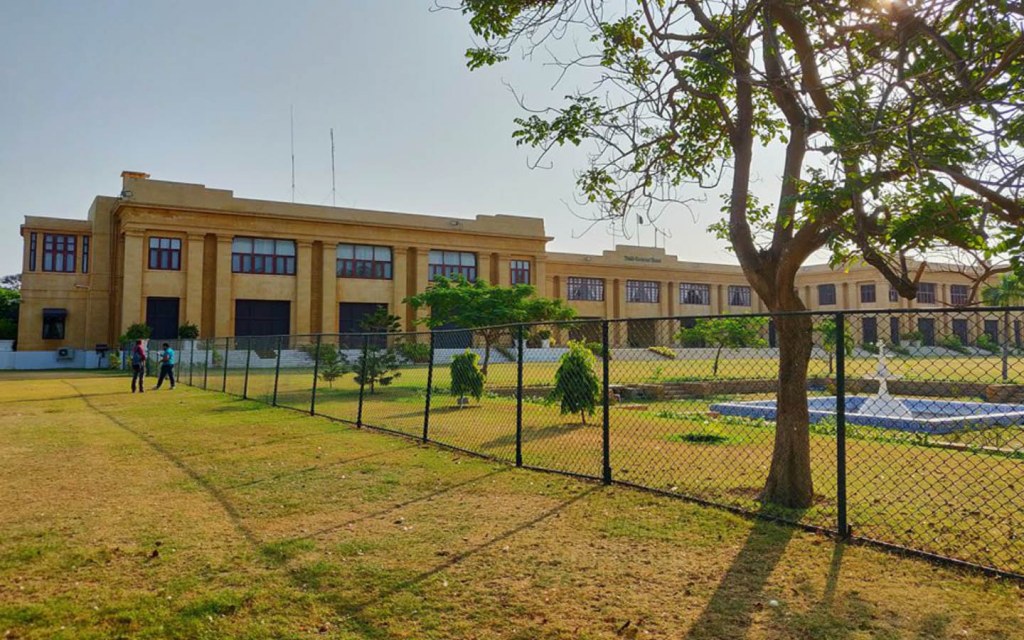
Following the partition of the Indian subcontinent, Quaid-e-Azam Muhammad Ali Jinnah was made the Governor-General for the newly independent nation of Pakistan. Accordingly, his next residence was the Governor House in Sindh, located in Civil Lines on Aiwan-e-Sadar Road. The house is known by many names, including Governor’s House, Governor General’s House, President’s House, and Government House, and it continuously changes hands, remaining the official residence of the Governor of Sindh.
After being awarded the title of Governor-General of Pakistan, this property became Jinnah’s primary residence until his death in September 1948 because it had been the official residence of the Governors-General of Pakistan at the time.
Built in 1939, the Governor’s House sits on the site of a previously demolished Government House, which had been built in 1843 by Sir Charles Napier. The construction on the present structure began in 1936, under the watchful eye of the renowned architect R. T. Russel, because the older house was no longer fit for habitation. The colonial-era style of architecture is deeply reflected in the creation of the Governor’s House, with a long driveway leading to imposing doors, and a spacious wraparound terrace giving amazing views of the gardens below.
There are three primary wings of the house, with only the grounds and Quaid-e-Azam’s office being open for tours. While the central space contains the offices of the current governor, their advisors, and their secretaries, one of the wings is called the Royal Suite. This is the office space that was occupied by Mohtarma Fatima Jinnah and Quaid-e-Azam Muhammad Ali Jinnah during his tenure as Governor-General. It is now used only by visiting heads of state, government officials, and VIP guests. You can find several belongings used by Jinnah nearly 70 years ago carefully preserved here.
The last of the three wings is the Darbar Hall, which is mainly used for press conferences and oath-taking ceremonies. It also contains a historic throne that was made for King Edward VII when he toured India as the Prince of Wales in 1876. This place is also off-limits to the public, but the gardens more than makeup for it. The Rose Garden is the crowning jewel here, along with a botanical garden containing a large variety of local plants and flowers. The Rose Garden grows a range of 36 different roses, providing fresh flowers inside the Governor’s House each day without fail.
Since the Governor’s House is now open for visitors, you can tour the premises from 6 am to 9 am daily, except for Sunday, when the timings for a visit are 4:30 pm to 6:30 pm. You can enter via Gate No. 1, after a quick security check. You will need to deposit your CNIC with the guards at the door and collect it upon your return.
Quaid-e-Azam Residency, Ziarat, Balochistan
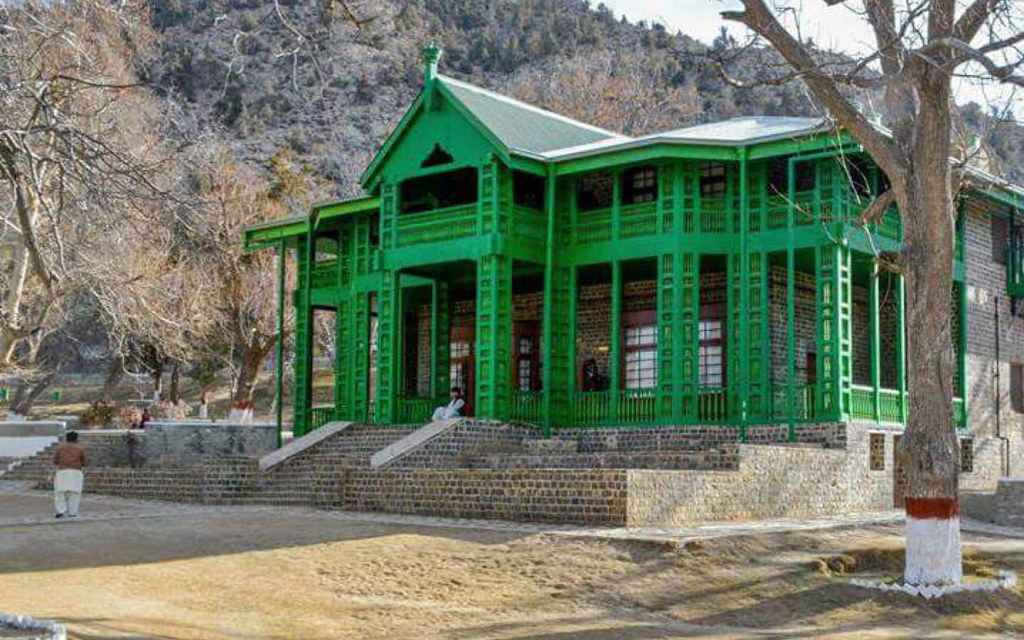
The Quaid-e-Azam Residency, also commonly known as the Ziarat Residency, was the last home of Jinnah during his lifetime. The Quaid spent two months and ten days before his death in Ziarat, where he was recuperating from poor health. Don’t forget to visit this house during your trip to Ziarat as this is the most famous landmark in the city.
The house is a beautiful wooden structure that was built during British Rule in 1892 and is declared a national monument. This region of Ziarat is surrounded by Juniper forests and offers a lot of scenic beauty. The house itself is also well-lit with natural light, with wooden construction, 5 en-suite bedrooms, and a large central space for entertaining guests.
During his stay in Ziarat, Quaid-e-Azam stayed in one of the three bedrooms on the first floor, with the other two being assigned to his nurse and his sister. The ground floor rooms were occupied by his assistant and his physician accordingly. Quaid-e-Azam Muhammad Ali Jinnah passed away in this very home, on the 11th of September 1948. The property still houses many of the personal effects of Jinnah and his small entourage.
The building has faced some wear and tear over time due to natural calamities, but the artefacts and photographs inside have been well-preserved, taking you back in time to when this was converted into a summer residence for the Governor-General of Pakistan. If you take a look at the history of Pakistani currency, you will also find the Ziarat Residency on the back of a PKR 100 note, since the year 2006.
Mazar-e-Quaid, M. A. Jinnah Road, Karachi
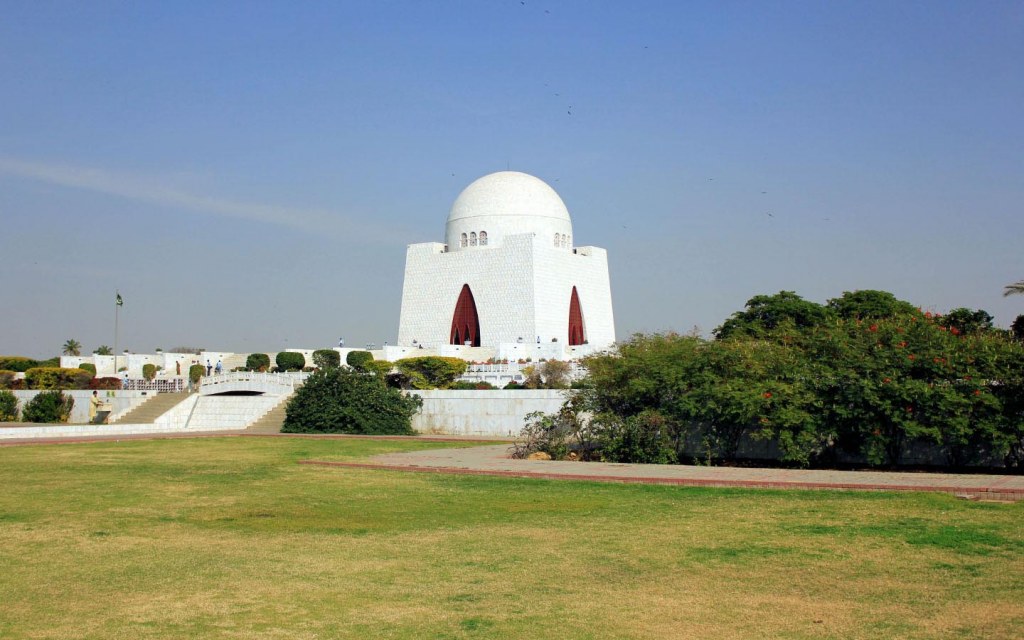
As the final resting place of Quaid-e-Azam Muhammad Ali Jinnah, the Mazar-e-Quaid deserves a mention as it is his eternal home. Also known as the National Mausoleum or the Jinnah Mausoleum, it is designed in a modernist style that was popular in the 1960s. The tomb is also the final resting place of his sister, Mader-e-Millat (Mother of the Nation) Fatima Jinnah. The first Prime Minister of Pakistan, Liaquat Ali Khan, is also buried on the premises.
After being completed in 1970, the Mazar-e-Quaid became an iconic landmark of the city of Karachi, seen from far and wide due to the lights that illuminated the white marble structure in the night sky. The adjoining 53-hectare gardens hold great charm for families visiting the tomb, as they pay their respects to a great leader and then enjoy a small picnic in the park with their kids. The gardens are designed with successive terraces leading away from the tomb in four different directions, accompanied by fifteen fountains leading to gates on each side of the park.
Aside from being a place for recreation, it is also the venue for special occasions when tributes are paid to the Father of the Nation on 14th August (Independence Day), 23rd March (Pakistan Day), 11 September (the death anniversary of Muhammad Ali Jinnah), and 25th December (Jinnah’s birthday). Official tours of the mausoleum are also conducted when foreign dignitaries visit the city.
This wraps up our detailed overview of Quaid-e-Azam’s homes in Pakistan. Most of the homes are open for visitors, even though certain areas might be off-limits, and photography may not be permitted inside the premises. If you’re in Karachi on the 25th of December, do visit the Mazar-e-Quaid and pay homage to a great leader who gave us freedom and a unique identity as Pakistanis.
Stay tuned to Zameen Blog for more posts that celebrate the patriotic spirit of the nation. We can be reached at blog@zameen.com for queries and suggestions.



